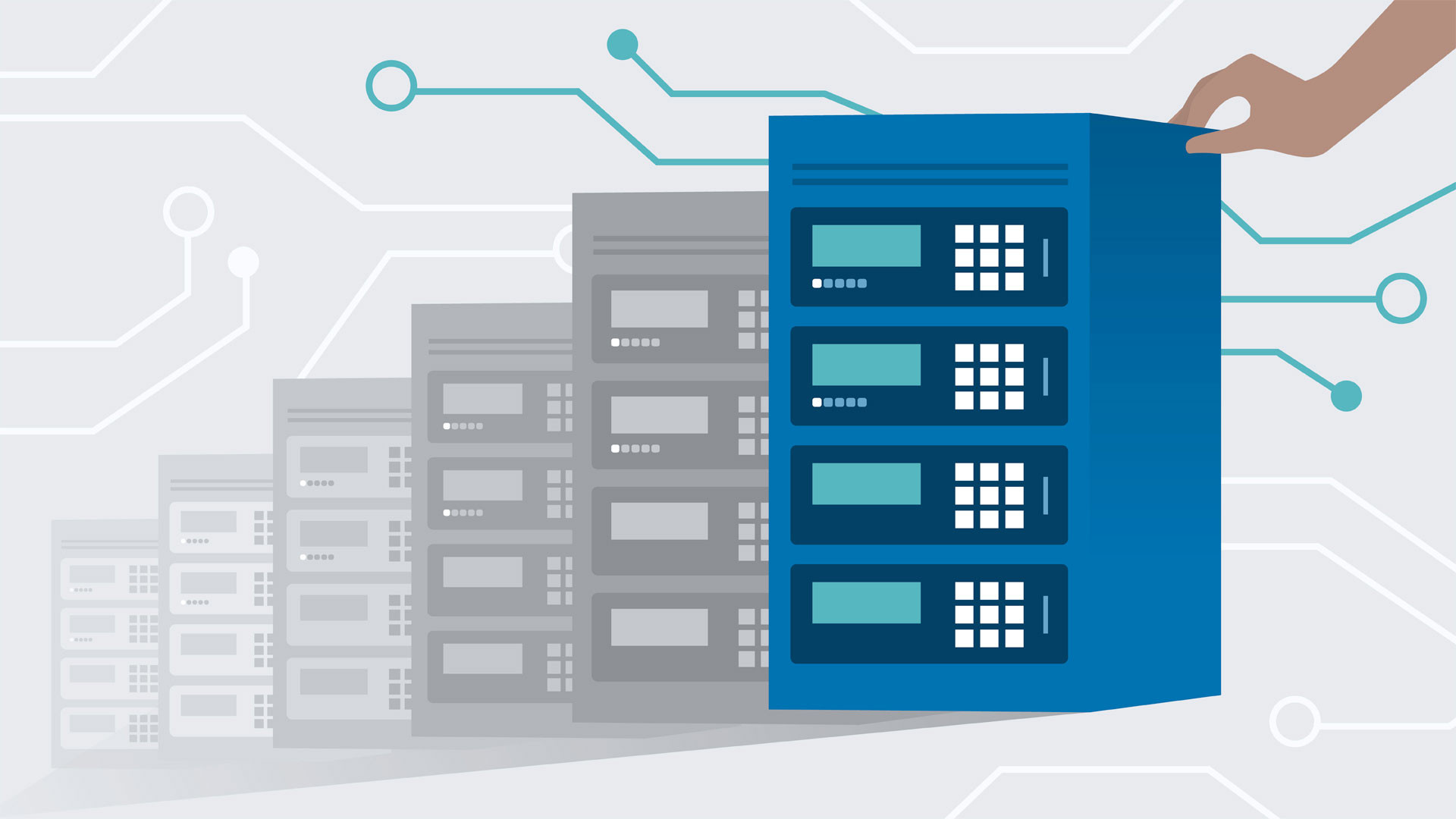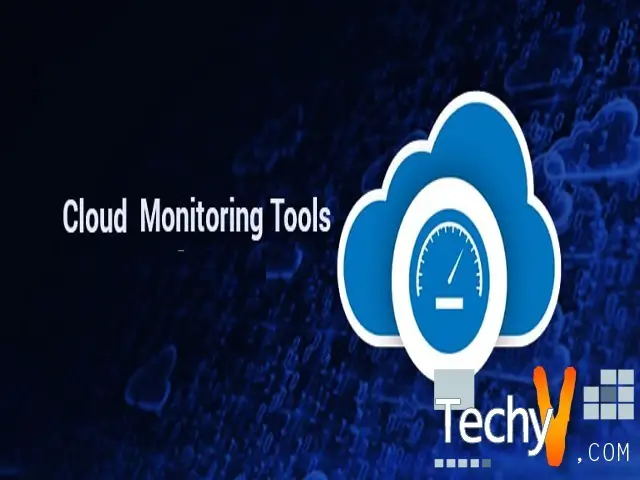The Concept of Scalability and Its Importance
Scalability in cloud computing refers to the capability of a system to manage increasing workloads and expanding data requirements efficiently. A scalable cloud environment can adapt to changing demands by automatically adjusting resources, ensuring optimal performance, reliability, and cost-efficiency. For modern businesses, scalability in cloud is crucial for achieving growth, enhancing competitiveness, and delivering high-quality services to customers.
Key Factors Influencing Scalability
Several key factors influence the scalability of cloud environments, including resource allocation, architecture design, and load balancing techniques. Properly managing these factors can help organizations achieve seamless scalability and ensure optimal performance, reliability, and cost-efficiency.
Resource Allocation
Efficient resource allocation is essential for achieving scalability in cloud computing. This involves dynamically assigning and reassigning computing resources, such as CPU, memory, and storage, based on workload demands. By allocating resources intelligently, organizations can prevent bottlenecks, minimize waste, and maintain high levels of performance.
Architecture Design
The design of cloud architectures significantly impacts scalability. Adopting a microservices-based architecture can enhance scalability by allowing organizations to develop, deploy, and manage small, independently scalable components. Additionally, containerization and serverless computing can further improve scalability by enabling fine-grained resource allocation and reducing the overhead associated with traditional virtual machines.
Load Balancing Techniques
Load balancing is a critical aspect of ensuring scalability in cloud environments. By distributing workloads evenly across multiple resources, organizations can prevent individual servers from becoming overloaded and maintain consistent performance levels. Popular load balancing techniques include round-robin distribution, least connections routing, and IP hash-based routing. Implementing these techniques can help organizations achieve seamless scalability and ensure high availability for their cloud-based applications and services.
Designing Scalable Cloud Architectures
Designing scalable cloud architectures is crucial for ensuring optimal performance, reliability, and cost-efficiency in cloud environments. By following best practices and implementing innovative solutions, organizations can build scalable systems that meet their growing workload and data demands.
Microservices Architecture
Adopting a microservices-based architecture can significantly enhance scalability in cloud environments. This approach involves breaking down monolithic applications into small, independently deployable components called microservices. By designing applications as a suite of microservices, organizations can achieve fine-grained scalability, enabling them to scale individual components based on demand.
Containerization
Containerization is another powerful strategy for enhancing scalability in cloud computing. Containerization involves packaging application code, dependencies, and configurations into lightweight, portable containers. By using containerization platforms like Docker and Kubernetes, organizations can efficiently manage and scale applications across various cloud environments, ensuring high availability and performance.
Serverless Computing
Serverless computing is an emerging trend in cloud computing that can further improve scalability. This approach involves offloading the management of infrastructure to cloud service providers, allowing organizations to focus on developing and deploying applications. By adopting serverless computing, organizations can achieve automatic scaling, reducing the overhead associated with managing and maintaining traditional virtual machines.
Real-World Use Cases
Numerous organizations have successfully implemented scalable cloud architectures using microservices, containerization, and serverless computing. For example, Netflix leverages a microservices architecture and containerization to manage its massive streaming service, while Google utilizes serverless computing to power its Google Cloud Functions platform. By studying these and other real-world use cases, organizations can gain valuable insights into designing and implementing scalable cloud architectures.
Implementing Auto-Scaling Features
Auto-scaling is a powerful feature that enables cloud environments to automatically provision and deprovision resources based on workload demands. By implementing auto-scaling, organizations can ensure optimal performance, reliability, and cost-efficiency for their cloud-based applications and services.
Benefits of Auto-Scaling
Auto-scaling offers several benefits, including:
- Improved resource utilization: Auto-scaling ensures that resources are used efficiently, minimizing waste and reducing costs.
- Enhanced performance: Auto-scaling enables applications and services to handle increasing workloads and data demands, ensuring consistent performance levels.
- Increased reliability: Auto-scaling helps prevent system failures and downtime by automatically adding resources when needed.
Configuring and Managing Auto-Scaling Policies
To configure and manage auto-scaling policies, organizations can use popular cloud platforms like AWS, Azure, and Google Cloud. These platforms provide intuitive user interfaces and APIs that allow users to define scaling rules, thresholds, and triggers based on various metrics, such as CPU utilization, memory usage, and network traffic.
AWS Auto-Scaling
Amazon Web Services (AWS) offers a comprehensive auto-scaling solution that integrates with various services, including EC2, ECS, and Lambda. With AWS Auto-Scaling, users can create scaling plans, configure scaling policies, and monitor system performance using CloudWatch and other tools.
Azure Auto-Scaling
Microsoft Azure provides an auto-scaling feature called Virtual Machine Scale Sets. This service enables users to deploy and manage a fleet of identical VMs and automatically scale them based on predefined rules and conditions.
Google Cloud Auto-Scaling
Google Cloud Platform (GCP) offers an auto-scaling feature called Managed Instance Groups (MIGs). With MIGs, users can create and manage a group of identical VMs and automatically scale them based on workload demands using load balancing and other techniques.
Best Practices for Auto-Scaling
To ensure optimal performance and cost-efficiency when implementing auto-scaling, consider the following best practices:
- Define clear scaling rules and thresholds based on historical data and performance metrics.
- Monitor system performance regularly and adjust scaling policies as needed.
- Implement cooldown periods to prevent rapid scaling and de-scaling cycles.
- Consider using spot instances or reserved instances to reduce costs when implementing auto-scaling in cloud environments.
Optimizing Database Performance
Optimizing database performance is crucial for achieving scalability in cloud environments. By implementing innovative strategies and techniques, organizations can ensure that their databases can handle increasing workloads and growing data demands, ultimately improving overall system performance.
Distributed Databases
Distributed databases are a powerful strategy for enhancing database scalability in cloud environments. By distributing data across multiple nodes, organizations can achieve horizontal scalability, enabling them to handle large volumes of data and high transaction rates.
Caching Mechanisms
Caching mechanisms can significantly improve database performance by reducing the number of database queries and minimizing latency. By storing frequently accessed data in memory, organizations can ensure that their applications and services can quickly retrieve and display information, enhancing user experience and scalability.
Indexing Techniques
Indexing techniques can also improve database performance by enabling faster data retrieval. By creating indexes on frequently queried columns, organizations can ensure that their databases can quickly locate and return the requested data, improving overall system performance and scalability.
Real-World Use Cases
Numerous organizations have successfully implemented database optimization strategies in cloud environments. For example, Twitter uses a distributed database called Apache Cassandra to handle its massive data volumes and high transaction rates. Similarly, Facebook uses a caching mechanism called Memcached to improve the performance of its social media platform.
Best Practices for Optimizing Database Performance
To ensure optimal database performance and scalability in cloud environments, consider the following best practices:
- Regularly monitor database performance and identify bottlenecks using tools like New Relic, Datadog, and AWS CloudWatch.
- Implement database optimization techniques, such as indexing, caching, and query optimization, to improve performance and scalability.
- Consider using managed database services, such as Amazon RDS, Azure SQL Database, and Google Cloud SQL, to simplify database management and optimization.
- Regularly update and patch databases to ensure optimal performance and security.
Comparing Scalability Features of Leading Cloud Providers
When selecting a cloud service provider, it’s essential to consider each platform’s scalability features and capabilities. This section compares the scalability features of leading cloud providers, including AWS, Azure, and Google Cloud, and discusses their unique advantages and limitations in terms of scalability and growth potential.
Amazon Web Services (AWS)
AWS is a popular cloud service provider known for its extensive range of services and features. AWS offers several scalability features, including:
- Auto-scaling: AWS Auto-Scaling enables automatic resource provisioning and deprovisioning based on workload demands.
- Elastic Load Balancing: AWS Elastic Load Balancing distributes incoming application traffic across multiple resources, ensuring high availability and fault tolerance.
- Amazon RDS: Amazon RDS is a managed database service that simplifies database management and optimization, enabling organizations to scale their databases seamlessly.
Microsoft Azure
Microsoft Azure is another leading cloud service provider that offers several scalability features, such as:
- Azure Virtual Machine Scale Sets: Azure Virtual Machine Scale Sets enable organizations to deploy and manage a fleet of identical VMs and automatically scale them based on workload demands.
- Azure Load Balancer: Azure Load Balancer distributes incoming traffic across multiple resources, ensuring high availability and fault tolerance.
- Azure SQL Database: Azure SQL Database is a managed database service that simplifies database management and optimization, enabling organizations to scale their databases seamlessly.
Google Cloud Platform (GCP)
Google Cloud Platform is a cloud service provider that offers several scalability features, including:
- Compute Engine: Google Compute Engine enables organizations to create and manage VMs and automatically scale them based on workload demands.
- Google Kubernetes Engine: Google Kubernetes Engine is a managed container orchestration service that simplifies container management and scaling.
- Cloud SQL: Cloud SQL is a managed database service that simplifies database management and optimization, enabling organizations to scale their databases seamlessly.
Selecting the Ideal Cloud Service Provider
When selecting a cloud service provider, consider factors such as cost, performance, security, and support. Additionally, evaluate each platform’s scalability features and capabilities to ensure that it meets your organization’s specific needs and growth potential. By carefully considering these factors, you can choose a cloud service provider that enables your organization to achieve optimal scalability and growth in cloud environments.
Selecting the Ideal Cloud Service Provider
Choosing the right cloud service provider is crucial for ensuring scalability, cost-efficiency, and growth potential. This section provides guidance on how to select the ideal cloud service provider based on specific business needs and scalability requirements. Consider the following factors when making a decision:
Cost
Cost is a critical factor when selecting a cloud service provider. Compare the pricing models of each provider and evaluate the cost-efficiency of each platform. Consider factors such as usage-based pricing, reserved instances, and long-term commitments to ensure that you select a provider that aligns with your budget and cost expectations.
Performance
Performance is another critical factor when selecting a cloud service provider. Evaluate the performance capabilities of each provider, including factors such as latency, throughput, and availability. Consider the performance requirements of your applications and workloads and select a provider that can meet or exceed those requirements.
Security
Security is a top priority when selecting a cloud service provider. Evaluate the security features and capabilities of each provider, including encryption, access controls, and compliance certifications. Select a provider that can meet your organization’s security requirements and ensure the confidentiality, integrity, and availability of your data and applications.
Support
Support is an essential factor when selecting a cloud service provider. Evaluate the support offerings of each provider, including technical support, documentation, and community resources. Select a provider that can provide the level of support that your organization requires to ensure ongoing success in cloud environments.
Real-World Use Cases
Consider real-world use cases when selecting a cloud service provider. Research successful implementations and case studies to gain insights into the provider’s capabilities and strengths. Consider factors such as industry vertical, application type, and workload demands when evaluating use cases to ensure that the provider can meet your organization’s specific needs and requirements.
Conclusion
Selecting the ideal cloud service provider is a critical decision that can impact your organization’s scalability, cost-efficiency, and growth potential. By considering factors such as cost, performance, security, and support, and evaluating real-world use cases, you can select a provider that aligns with your organization’s specific needs and requirements. By carefully considering these factors, you can ensure ongoing success in cloud environments and achieve optimal scalability and growth potential.
Utilizing Monitoring Tools and Techniques
Monitoring is a critical aspect of maintaining a scalable cloud environment. By tracking system performance, identifying bottlenecks, and ensuring ongoing scalability, organizations can optimize their cloud infrastructure and achieve optimal performance, reliability, and cost-efficiency. This section explains how to use monitoring tools and techniques to maintain a scalable cloud environment.
Selecting Monitoring Tools
Selecting the right monitoring tools is essential for effective monitoring in cloud environments. Popular monitoring tools for cloud environments include:
- CloudWatch: CloudWatch is a monitoring service provided by AWS that enables organizations to monitor their AWS resources and applications.
- Azure Monitor: Azure Monitor is a monitoring service provided by Microsoft Azure that enables organizations to monitor their Azure resources and applications.
- Google Cloud Monitoring: Google Cloud Monitoring is a monitoring service provided by Google Cloud that enables organizations to monitor their Google Cloud resources and applications.
Monitoring System Performance
Monitoring system performance is critical for ensuring ongoing scalability in cloud environments. Key performance metrics to monitor include:
- CPU utilization: Monitor CPU utilization to ensure that resources are being used efficiently and to identify potential bottlenecks.
- Memory utilization: Monitor memory utilization to ensure that resources are being used efficiently and to identify potential bottlenecks.
- Network traffic: Monitor network traffic to ensure that resources are being used efficiently and to identify potential bottlenecks.
- Storage utilization: Monitor storage utilization to ensure that resources are being used efficiently and to identify potential bottlenecks.
Identifying Bottlenecks
Identifying bottlenecks is essential for optimizing cloud infrastructure and achieving seamless scalability. Key bottlenecks to monitor include:
- Resource constraints: Monitor resource constraints to ensure that resources are being allocated efficiently and to identify potential bottlenecks.
- Network latency: Monitor network latency to ensure that network performance is optimal and to identify potential bottlenecks.
- Disk I/O: Monitor disk I/O to ensure that storage performance is optimal and to identify potential bottlenecks.
Proactive Monitoring and Maintenance
Proactive monitoring and maintenance are essential for maintaining a scalable cloud environment. By monitoring system performance and identifying bottlenecks proactively, organizations can address issues before they impact system performance and ensure ongoing scalability. Implementing a proactive monitoring and maintenance strategy can help organizations achieve optimal performance, reliability, and cost-efficiency in cloud environments.





